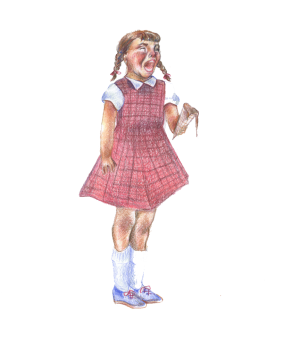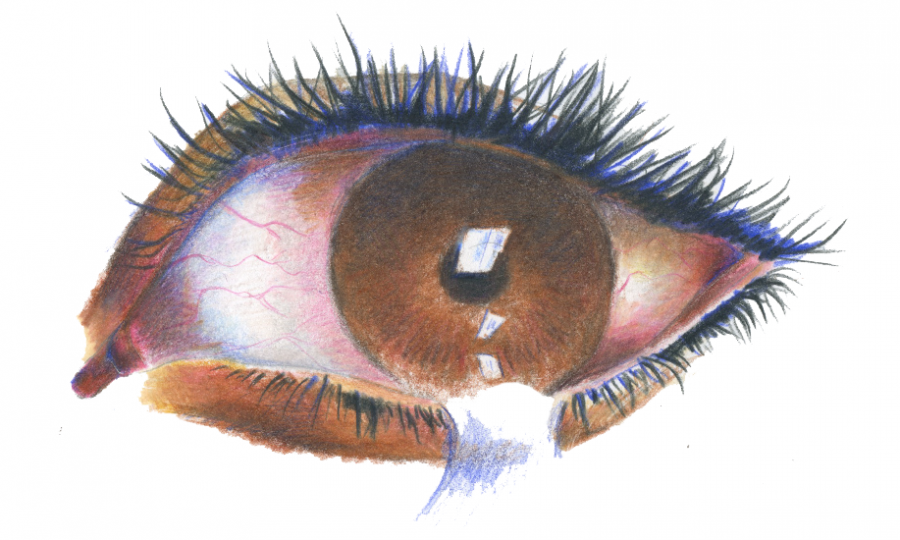Crying
February 11, 2017
In our daily jargon people distinguish types of crying. For example, you may have heard the terms “crocodile tears” or “happy tears.” Well, this classification may not be as far-fetched as one might think. In fact, according to Dr. Nick Knight from the British newspaper the Independent, there are three types of crying: basal, reflex and psychic. Basal tears help to keep your cornea from drying out. Reflex tears are non-emotional tears, a common example of which is crying when cutting onions. The final kind, psychic, is what this page is focused on: the good old break-up-and-cry-for-a-few-weeks-tears. These tears, which are filled with emotion, hormones and natural pain killers, are shed by most people, particularly the American teenager.
Why do we cry?
We have all had that time where something triggered extreme emotions inside us, and most likely, that caused tears to spring out of our eyes.
Crying is usually a non-verbal request to be comforted by someone else. Although sometimes no one may be around, crying still expresses that desire for comfort.
“People cry in order to express their feelings or when they experience a strong emotion,” senior Aarya Bavare said.
The definition of crying varies among people, but Stephen Sideroff, Ph.D has come up with a basic one.
“Crying is a natural emotional response to certain feelings, usually sadness and hurt,” Stephen Sideroff, PhD, said in his article titled “Why We Cry: The Truth About Tearing Up.” “But then people [also] cry under other circumstances and occasions.”
There are various circumstances that trigger tears. Some people cry in response to beauty, and during this time, they are reaching into a deeper part of themselves, letting go of all that is holding them back from breaking down into tears.
What happens when we cry?
Imagine you’re watching a movie and a dog dies. Despite the fact that you know it’s not real, you feel tears welling up in your eyes. You know why you’re crying, but what exactly is happening to you body?
Well, according to Dr. Nick Knight from the Independent, when a tear is produced from your lacrimal gland, it rests between your eyeball and eyelid. This causes you to blink, which consequently smears a film across your eye. At this point, the tear has two routes: it either drains through your nose or overflows down your cheeks.
Beneath the surface, however, your body is facing side effects. Your sympathetic nervous system is triggered, causing your fight or flight instinct instinct to kick in. This makes you sweat, slows your breathing, increases your heart rate and gives you a lump in your throat.
Hormonally, according and article on everydayhealth.com that was reviewed by Pat F. Bass III, M.D., M.P.H., crying gives you an emotional release and thus “purges and purifies your feelings.” Thus, crying acts as a natural pain killer, which is why people often say they feel better after a “good cry.”
Does crying help?
Shedding tears affects each individual in a different way.
According to a Health Communities article titled “Does Crying Make You Feel Better?,”a theory proposes that the way a person’s parents responded to their cries throughout their infancy and childhood may affect how that person feels after crying as an adult. If their parents responded in a loving and attentive manner, crying would be a source of relief for them as an adult. If their parents ignored them as children or infants, they may feel as bad or  worse after crying.
worse after crying.
In 2008, a study in the “Journal of Social and Clinical Psychology” analyzed data on crying. This study included more than 5,000 college students from 35 countries. More than half of the students said that crying made them feel better mentally, 38 percent felt the same and 10 percent said they felt worse.
“I think that crying helps sometimes,” junior Ashley Hornig said. “It’s a good thing to do when emotions start to build up and you just need to let it all out.”
According to Web MD article titled “Is Crying Good for you?”, the Japanese have always been strong believers that crying has many health benefits, and because of this, some cities in Japan are known to have “crying clubs” called “rui-katsu,” which literally means “tear-seeking.” Members of this club gather to indulge in old-fashioned sobfests. To help start the flow of tears, participants watch tearjerkers.
Psychologists have concluded that those who do not cry once in a while are doing a disservice to themselves.
“Crying helps me,” senior David McCormack said. “I normally feel better and more relieved when I’m done. However, I don’t cry often.”










